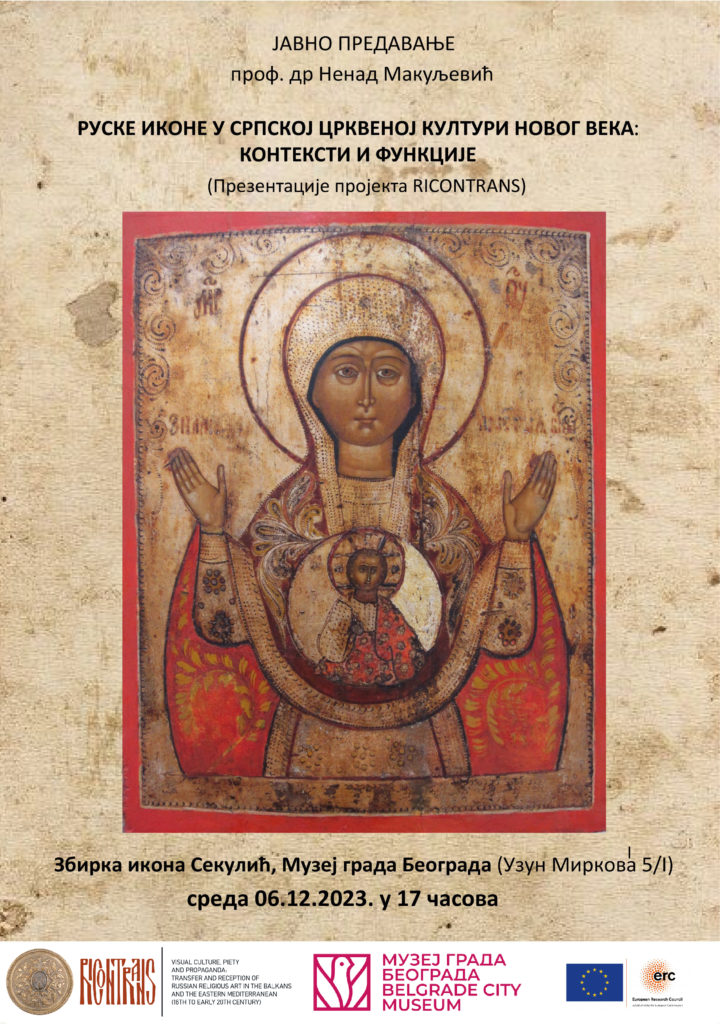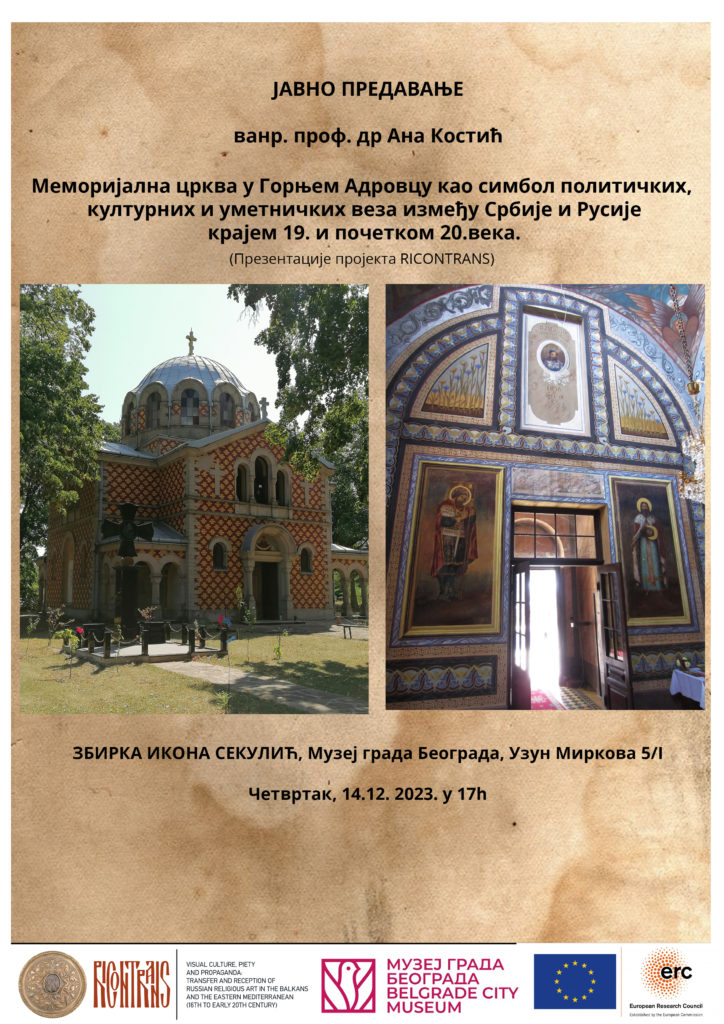Series of Public Lectures in Belgrade
The Sekulić Icon Collection
Museum of the City of Belgrade
The first public lecture, in the context of the RICONTRANS Project, was given by Professor Nenad Makuljević of the Faculty of Philosophy in Belgrade, on Wednesday, December 6 at 5 p.m. at the Sekulić Icon Collection, at the Museum of the City of Belgrade.

The public lecture by Professor Nenad Makuljević “Russian icons in Serbian church culture of the new century: contexts and functions,” was dedicated to the transfer of Russian sacred visual culture to Serbian Orthodox churches.
During the new century, numerous icons, books and numerous religious objects were brought from the territory of the Russian Empire. The ideals of Orthodoxy were found in Russian icon-painting, which led to the intensive import of icons, the arrival of Russian painters and the training of Serbian painters in Russian icon-painting schools. In addition to religious, Russian sacral culture also had a political character. Gifts of icons and iconostases from Russia simultaneously denoted Russian support for the Serbian people.
The second public lecture was given on Thursday, December 14 at 5 p.m. at the Sekulić Icon Collection by Associate Professor of the Faculty of Philosophy in Belgrade, Dr. Ana Kostić.

The title of the lecture was: “The memorial church in Gornji Adrovac as a symbol of political, cultural and artistic ties between Serbia and Russia at the end of the 19th and beginning of the 20th century”
During the Serbian-Turkish wars (1876–1877/1878), a Russian volunteer, Colonel Nikolai Nikolayevich Rajevsky, died in the battle on Goli Brdo, a place near the village of Gornji Adrovac, near Aleksinac. In his honor, a memorial church dedicated to the Holy Trinity was built at the place of his death at the beginning of the 20th century. The processes of memorializing the figure of Nikolay Nikolajevic Rajevsky and the construction and decoration of the memorial church in Gornji Adrovac will be viewed in the light of political circumstances and national ties between Russia and Serbia during the second half of the 19th and early 20th centuries. As the visual shaping of the temple was carried out according to plans and sketches sent from Russia, and the iconostasis itself was imported from there, the temple in Gornji Adrovac represents a kind of transfer of contemporary Russian church art to Serbian soil, which also achieved the aesthetic ideal in the church art of that time.